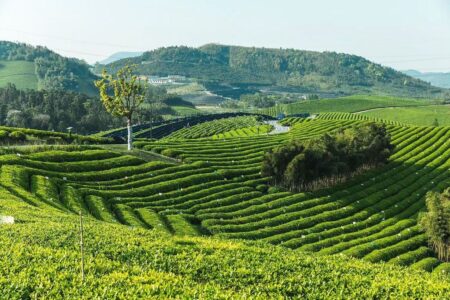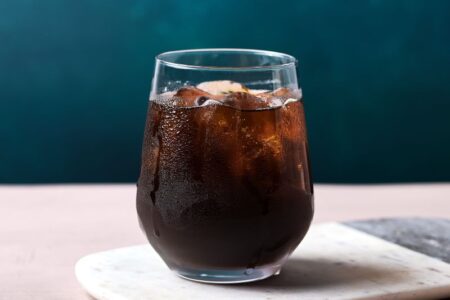Restaurants & Foodservice: Please Consider Premium, Freshly Brewed Iced Tea

Tea is the most profitable beverage item in foodservice establishments, but operators could generate greater sales by serving premium, freshly brewed iced tea.
By Scott Svihula
If you’re a restaurant, coffeehouse or foodservice establishment, is your iced tea freshly brewed? If you answered no, know that more than half of all tea drinkers will either choose a different beverage, order no beverage, or order the dreaded tap water. What tea lovers want is freshly brewed batches that are prepared throughout the day in varying types, from the classic black, to flavoured green, to caffeine-free alternatives. However, you may be asking yourself, “Why should I care about delivering a premium, freshly brewed iced tea?”
Well, besides the fact that tea is the most profitable beverage item on your menu, tea commands attention at foodservice with almost USD $20 billion in sales annually. And if you’re a tea producer, supplier or distributor, you already know this and may even educate your restaurant and foodservice clientele about tea’s profitability and the value of premium, fresh brewed. If you don’t, this article may encourage you to do so.
Tea: The First & Last Impression
A study conducted by Dataessential, based in Chicago, Illinois, showed that freshly brewed tea was healthier (55 percent), tasted better (51 percent), was more natural and less processed (46 percent), than other cold beverage alternatives. The study also showed that when fresh brewed is not offered, 20 percent of people would order a different beverage and 20 percent would not order any beverage at all.
What most restaurateurs forget is that one to two glasses sold per brew ends up paying for the entire batch. Throwing away a little or even a lot of tea at the end of the shift is not a bad thing, since the cost has already been recovered. What is worse is keeping that tea and selling it as freshly brewed during the next shift. Not only does the tea not taste as good or fresh, but the negative reception makes the entire meal seem bad. Often, tea is the first and last impression your guests have of your restaurant.
Ironically, tea shows up on about only 70 percent of tea menus. In the same study, consumers were asked what teas they wanted to see on the menu: flavoured teas (53 percent), blended teas (45 percent), artisan/hand crafted teas (42 percent), sparkling tea (37 percent) and tea cocktails (36 percent). But when you segment the population in the study by age, millennial scores were even more pronounced: flavoured teas (62 percent), blended teas (55 percent), artisan/hand crafted teas (54 percent), sparkling tea (47 percent) and tea cocktails (51 percent).
Organic is nice to have, but not required. Around 70 percent of consumers believe organic foods are healthier for them. But, since tea contains high concentrations of polyphenols, and doesn’t contain salts, sugars or carbs, it is considered a healthier beverage even without organic certification. In fact, when New York-based market research firm, Nielsen, studied the buying habits of tea-drinking millennials, organic was not even in the top five factors used to decide to purchase a tea. What was more critical was the flavour profile and the use of natural ingredients. However, it is important to note that when discussing flavoured teas, we are not talking about adding flavoured syrups to tea, but skillfully blended and flavoured tea leaves. Flavoured syrups have a negative image to most tea drinkers, apart from chai tea lattes, which have been made popular by many tea and coffee shops.
Small Batch Iced Tea is Essential
Traditional foodservice iced tea, brewed through a commercial iced tea brewer, works great for your typical fast casual, quick service or full-service restaurants. However, for most coffee and tea shops, or small artisanal locations, these machines may be overkill. Small batch preparation is the way to go. Though more labour intensive than commercial brewing, this style of iced tea preparation opens the door to utilizing a wider selection of teas. Commercial iced tea machines require a specific type of tea and particle size for the machine to properly prepare the tea.
More consumers are seeking out these small batch preparations of iced tea; especially millennials and Generation Z (or iGeneration). In fact, iced tea is usually the first experience many have with tea, typically at a younger age. Generation Z is the perfect consumer target for these small batch iced teas.
Small batch iced tea preparation is usually made in batches from two quarts to one gallon, mimicking home preparation. There is a wide range iced tea ware on the market, developed just for this purpose. One of the most popular used in many tea and coffee shops is the Takeya Flash Chill Iced Tea Maker. This unique pitcher allows you to use just about any loose-leaf tea and prepare two quarts of iced tea.
Small batch iced teas offer a few benefits:
- allows more tea flavour options,
- allows for individual preparations,
- allows for fresher tea options throughout the day.
Small batch iced teas have become so popular that the Global Tea Championship (GTC) launched a new event specifically for this type of iced tea. The inaugural event took place this past January in Boulder, Colorado. There were 13 categories evaluated and 19 medals awarded. Some of the standouts included:
- TeaSource Machu Peach – Gold Medal Winner in Flavoured White
- The Tea Spot Bolder Breakfast – Gold Medal Winner in Flavoured Puer/Dark
- SerendipiTea Red Oz – Gold Medal Winner in Blended Rooibos
Tea Targets Cold Brew
Cold brewed beverages have become all the rage recently, and everyone is trying to capture this segment of the business. With the success of cold brew coffee, other industries are trying to capitalize on this trend, and tea is no exception.
Cold brew, also referred to as cold water extraction, was initially developed to brew ground coffee in cool water for an extended period, typically 12+ hours. However, as experts will tell you, the preparation of coffee and tea are not the same. The biggest concern with tea has to do with the microbiological levels naturally found in tea leaves. Coffee beans go through a high temperature process called roasting, that kills any microbiological organisms that are typically found on the green coffee bean. With tea leaves the typical kill-step is the steeping process in hot water. Not having a kill step could lead to food safety issues, though the risk is low.
To mitigate risk, one should use teas from only reputable sources that can provide Certificates of Analysis on their teas or have third party verified lab analysis for microbiological levels. The highest potential risk comes from E coli and salmonella, though excessively high counts of molds and yeast could also lead to potential food safety issues. Organic teas are not the answer to this potential issue as microbiological levels are virtually the same on conventional and organic tea leaves. The major difference between conventional and organic tea leaves are the pesticide residuals and the types of pesticides used. Additionally, herbal teas (tisanes) are of greater concern as these have a much greater risk of higher microbiological levels.
Good Manufacturing Practices (GMPs) and Sanitation Standard Operating Procedures (SSOPs) should be followed when preparing cold brew beverages as there is greater potential of microbiological contamination from the environment, the equipment used, and of that of the preparer. Here we are mostly concerned about Staphylococcus aureus, botulism and listeria. And just like with hot prepared beverages, filtered clean water is essential.
The danger zone for food is between 40°-140° Fahrenheit (F). To help mitigate food safety issues with cold brew tea, most tea companies’ employee one of the two measures below:
- Prepare the cold brew tea with water below 40°F and store the tea in the refrigerator during the entire brew process; and store the finished beverage in the refrigerator.
- First add 200°F+ water covering the tea leaves for 1-1.5 minutes. Then add cold water and refrigerate as noted above.
It is important to note that not all teas will taste great prepared as cold brew. One needs to experiment to find the right tea, length of extraction time, leaf particle size and tea to water ratio. Additionally, testing in smaller batches and then extrapolating to larger batches does not always work. This has to do mainly with the depth of the tea and the lack of agitation of the leaves.
This month, the Global Tea Championship will be evaluating several iced tea categories including: commercial iced tea, bag-in-box (BIB) tea, ready to drink (RTD) tea, and cold brew iced tea submissions from around the world. Additionally, in June winners from the Small Batch Iced Tea and Commercial Iced Tea events will be showcasing their medal-winning iced teas in the Winner’s Tasting Circle at the World Tea Expo in Las Vegas, Nevada, 12-14 June. (See GlobalTeaChampionship.com and WorldTeaExpo.com for more information on the championship and trade show.)
Scott Svihula is a tea expert, Global Tea Championship evaluator and founder of Orlando, Florida-based Hula Consulting, an independent tea consultancy. To learn more about Svihula’s business, visit hulaconsulting.com.



